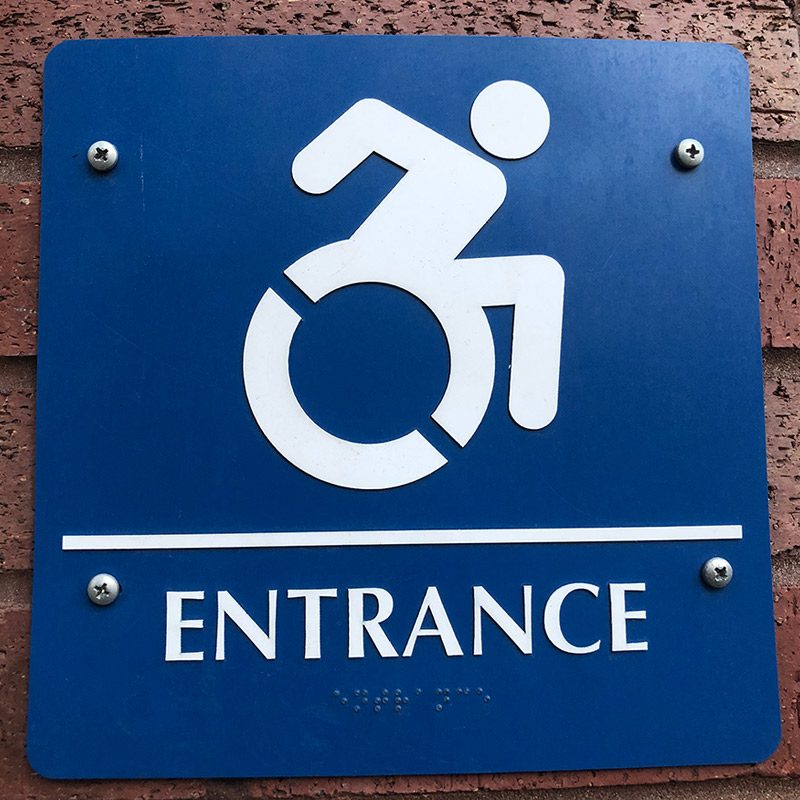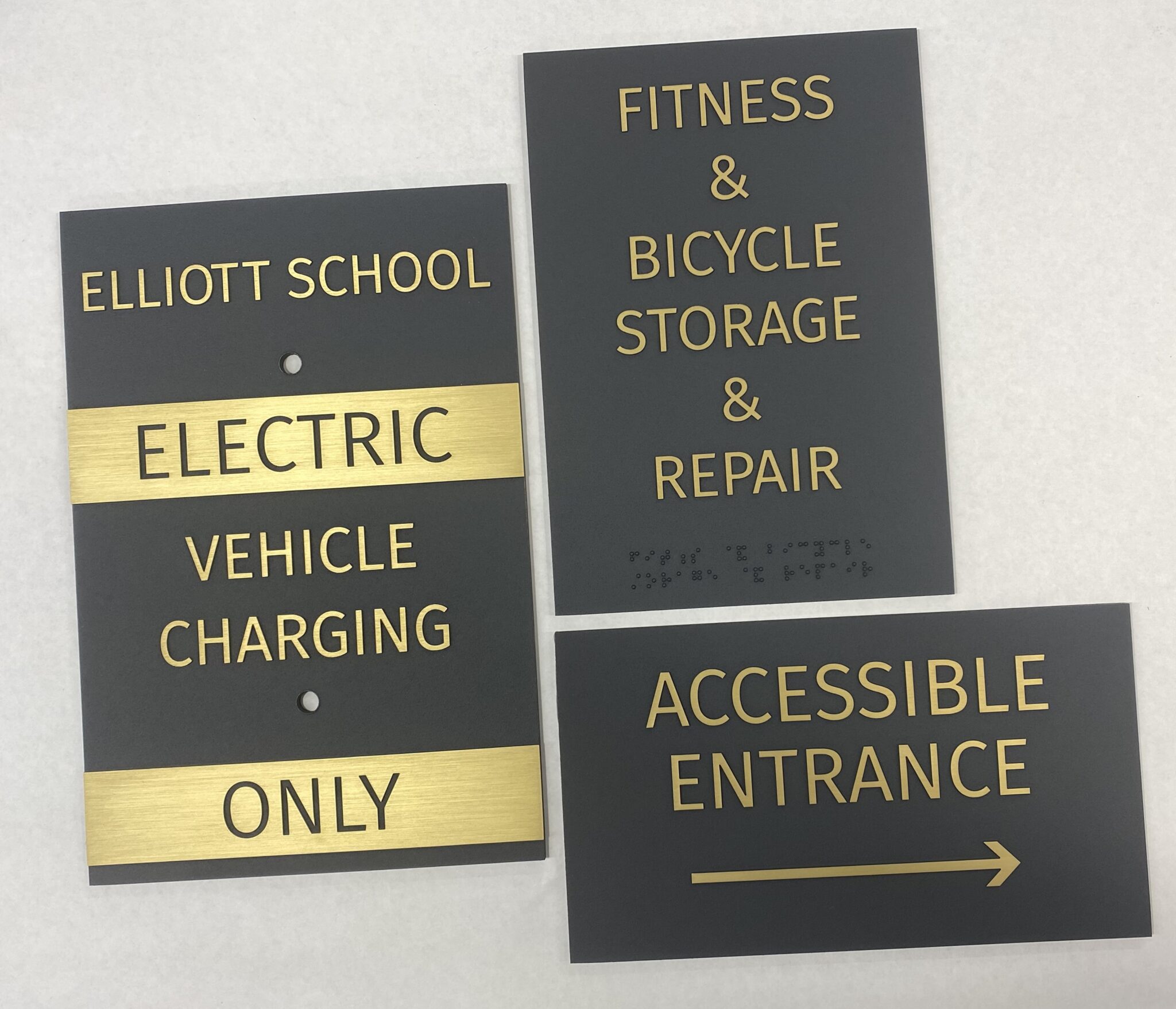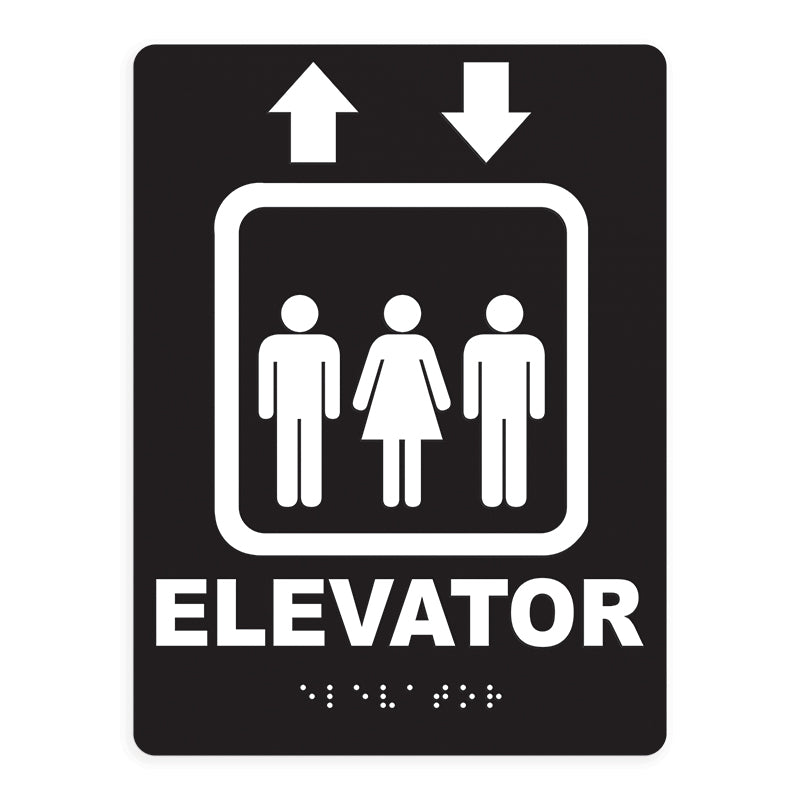Discover the Significance of ADA Signs in Public Spaces
Discover the Significance of ADA Signs in Public Spaces
Blog Article
Exploring the Secret Attributes of ADA Indicators for Boosted Access
In the world of ease of access, ADA indicators serve as quiet yet effective allies, making sure that spaces are accessible and comprehensive for people with impairments. By incorporating Braille and tactile aspects, these indicators break obstacles for the visually impaired, while high-contrast shade systems and clear fonts provide to varied visual demands.
Significance of ADA Compliance
Guaranteeing compliance with the Americans with Disabilities Act (ADA) is vital for promoting inclusivity and equivalent accessibility in public spaces and work environments. The ADA, enacted in 1990, mandates that all public facilities, employers, and transportation solutions suit individuals with handicaps, ensuring they delight in the exact same civil liberties and possibilities as others. Compliance with ADA requirements not just meets lawful commitments but also improves an organization's online reputation by showing its commitment to diversity and inclusivity.
Among the crucial aspects of ADA conformity is the application of accessible signage. ADA indicators are designed to guarantee that individuals with specials needs can easily navigate via buildings and areas. These signs should adhere to certain standards pertaining to size, font style, color contrast, and placement to guarantee exposure and readability for all. Effectively applied ADA signs assists get rid of barriers that people with specials needs commonly come across, consequently advertising their independence and self-confidence (ADA Signs).
Additionally, adhering to ADA regulations can reduce the risk of lawful consequences and potential penalties. Organizations that fail to follow ADA standards might face penalties or legal actions, which can be both financially challenging and harmful to their public image. Thus, ADA conformity is integral to fostering a fair setting for every person.
Braille and Tactile Aspects
The consolidation of Braille and tactile elements into ADA signs personifies the concepts of ease of access and inclusivity. It is commonly placed under the equivalent message on signage to guarantee that individuals can access the info without visual aid.
Tactile aspects extend past Braille and include raised characters and symbols. These elements are designed to be noticeable by touch, enabling individuals to determine space numbers, bathrooms, departures, and other vital locations. The ADA establishes certain guidelines concerning the size, spacing, and positioning of these responsive elements to enhance readability and make sure consistency throughout different settings.

High-Contrast Color Pattern
High-contrast color design play an essential role in boosting the exposure and readability of ADA signage for people with visual problems. These plans are essential as they optimize the difference in light reflectance in between text and history, making certain that indicators are conveniently discernible, even from a range. The Americans with Disabilities Act (ADA) mandates the usage of particular shade contrasts to accommodate those with restricted vision, making it an important facet of compliance.
The effectiveness of high-contrast shades hinges visit on their capacity to stand apart in different illumination conditions, including poorly lit environments and locations with glow. Normally, dark text on a light background or light text on a dark history is employed to accomplish ideal comparison. Black text on a white or yellow background supplies a stark visual distinction that helps in fast acknowledgment and comprehension.

Legible Fonts and Text Dimension
When taking into consideration the design of ADA signs, the option of readable fonts and appropriate text size can not be overstated. The Americans with Disabilities Act (ADA) mandates that fonts have to be not italic and sans-serif, oblique, manuscript, extremely ornamental, or of unusual form.
According to ADA click to find out more standards, the minimum text elevation ought to be 5/8 inch, and it needs to increase proportionally with watching distance. Uniformity in text dimension contributes to a cohesive aesthetic experience, helping people in navigating environments effectively.
Furthermore, spacing in between lines and letters is integral to readability. Sufficient spacing protects against personalities from showing up crowded, enhancing readability. By sticking to these criteria, designers can dramatically improve ease of access, ensuring that signage offers its intended objective for all individuals, no matter their visual capacities.
Efficient Placement Techniques
Strategic placement of ADA signage is vital for optimizing availability and ensuring compliance with lawful criteria. Correctly positioned indicators lead individuals with disabilities successfully, promoting navigation in public spaces. Secret considerations consist of height, closeness, and presence. ADA guidelines specify that indications need to be installed at a height in between 48 to 60 inches from the ground to guarantee they are within the line of view for both standing and seated individuals. This common elevation range is essential for inclusivity, allowing wheelchair customers and people of varying elevations to access information easily.
Additionally, indicators must be positioned beside the latch side of doors to permit easy recognition prior to entrance. This placement helps individuals locate areas and spaces without obstruction. In instances where there is no door, signs must be located on the closest nearby wall. Uniformity in indicator placement throughout a facility improves predictability, reducing complication and improving overall user experience.

Conclusion
ADA signs play an important duty in advertising access by incorporating features that attend to the requirements of individuals with impairments. These components collectively promote a comprehensive environment, emphasizing the value of ADA compliance in making sure equivalent access for all.
In the world of ease of access, ADA signs serve as quiet yet effective allies, making sure that areas are inclusive and accessible for individuals with handicaps. The ADA, passed in 1990, mandates that all public facilities, employers, and transportation services fit people with impairments, ensuring they enjoy the same legal rights and possibilities as others. ADA Signs. ADA indicators are created to ensure that people with impairments can conveniently browse through structures and rooms. ADA standards specify that indications should be installed at a height between 48 to 60 inches from the ground to read here guarantee they are within the line of sight for both standing and seated individuals.ADA indicators play an important function in advertising accessibility by incorporating attributes that deal with the demands of individuals with impairments
Report this page